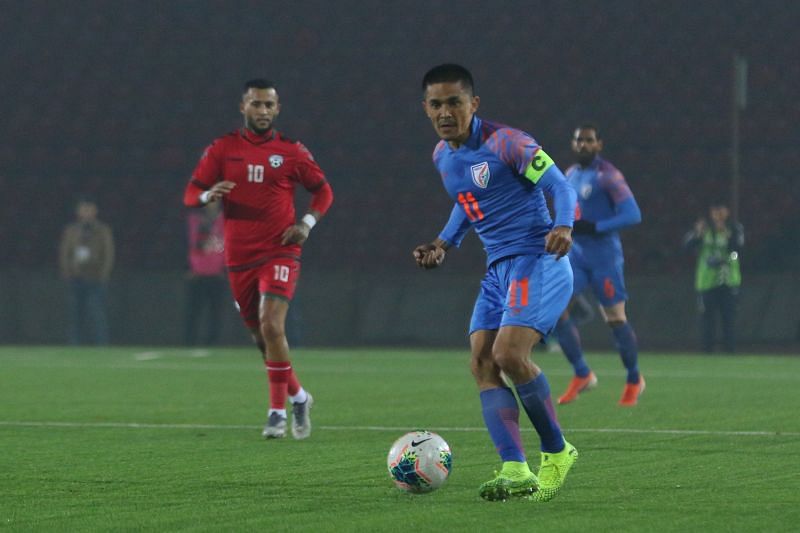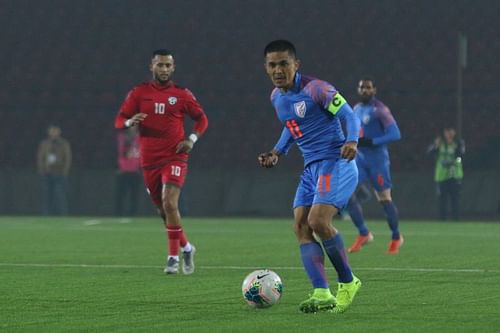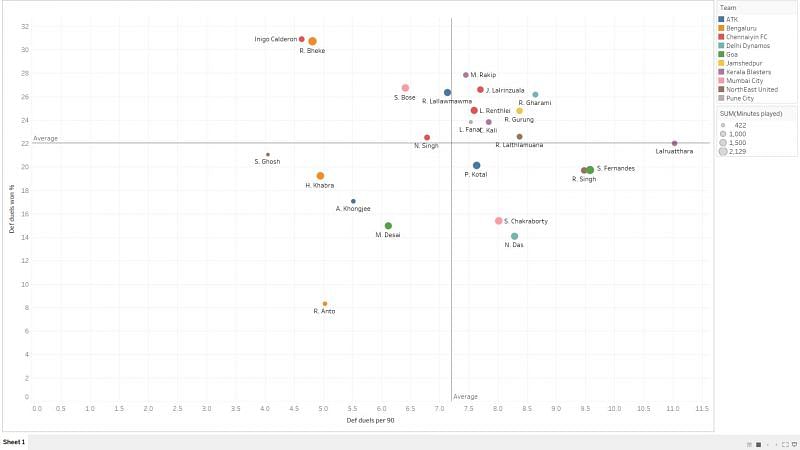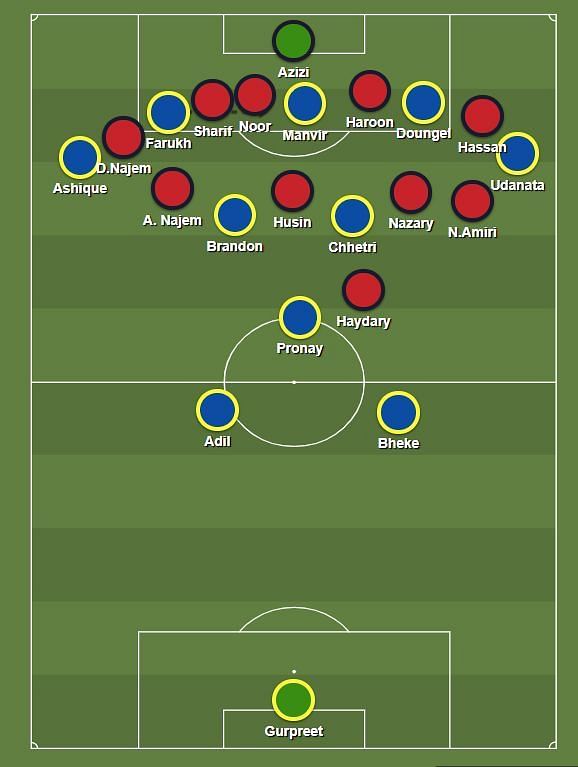
FIFA 2022 World Cup Qualifier: Afghanistan vs India - Tactical Analysis

The way to the fans' hearts has always results. Stephen Constantine lost his job after he failed to qualify for the knockout stages of the 2019 AFC Asian Cup. Even the mighty Arsène Wenger, who managed Arsenal for a staggering 23 seasons, lost the trust of the fans owing to several trophyless seasons. Less than 6 months after taking over the reins from Constantine, Igor Štimac looks to have fallen under the same bus.
Štimac's witty responses in the press conferences amalgamated with his continuous presence in the domestic circuit had eluded the Indian football fraternity from scrutinising his wrong methods and tactics in almost all the games.
The fact that he has not found his playing XI even after a Kings's Cup campaign, Intercontinental Cup stint and four games into the World Cup Qualification is a matter of grave concern. On that note, let's dive deep into the intricacies and nuances of the Afghanistan vs India match in the World Cup Qualification encounter in Tajikistan.
Lineups
Anoush Dastgir started with his tried and tested 4-4-2 formation. However, he made numerous changes to his starting lineup from his previous game against Oman. Ovays Azizi manned the goal-post as usual, Hassan Amin and David Najem assumed their positions on either side of Sharif Mohammad and Haroon Amiri in defence.
Noor Husin and Farshad Noor provided the extra layer of protection in the midfield and Ahmed Haydary and Zelfagar Nazary were the wingers who often drifted narrow to create space for the overlapping full-backs. Omid Popalzay and Faisal Shaysteh were trusted to lead the attack.
Štimac came out with a different formation from the very start. The Croat opted to ditch his preferred 4-4-1-1 in favour of the 4-2-3-1, with Sahal Abdul Samad just behind Sunil Chhetri. Udanata Singh and Ashique Kuruniyan were trusted to deliver crosses inside the Afghanistan box from the wings. Brandon Fernandes and Pronay Halder were stationed in the heart of the midfield.
Štimac had to tweak his backline due to Sandesh Jhingan's injury and Anas Edathodika's withdrawal due to family reasons. The newly formed centre-back pair of Rahul Bheke and Adil Khan started in the heart of the defence, with Pritam Kotal and Mandar Rao Desai either side of the centre-halves to complete the defensive setup.
Tactical Setup
Afghanistan started with a 4-4-2 formation and defended in a narrow and compact defensive block in the same setup. However, when they moved forward to attack, Anoush Dastgir pushed his captain, Farshad Noor, up to trouble the Indian defence with a 4-1-3-2 setup.
India too had a different approach when they looked to prevent the Afghan build-up from their attacks. When Dastgir pushed his captain, Noor, forward, Husin acted as the pivot to carry the ball forward. Štimac looked to prevent the ball from reaching the ball carrier by 'pendulum pressing'.
Pendulum pressing means the forwards won’t go for aggressive pressing, rather they would be blocking the passing channel to the opponent’s ball carrier. One player would be behind the ball carrier to mark him closely and another would be moving towards the opponent’s centre-back who has the ball in his feet. The player moving away from the ball carrier should maintain a position and body orientation where he blocks the passing channel to the carrier.
In this game, Sahal moved up to partner Chhetri during Afghan buildups. It changed the Indian shape to 4-4-2 when they defended. Sahal and Chhetri blocked the passing lane of the ball carrier, Husin, which prompted one of the Afghan centre-backs, Sharif Mohammad, to carry the ball to the opposition half. Mohammed stood true to his task and produced a few Afghan attacks through his ability to carry the ball forward.
Afghan attack through the right-flank
Mandar Rao Desai has made the left-back spot his own under the Stimac and his ability to help during build-up gives him an enormous edge over other Indian left-backs. However, his defending ability is still a matter of grave concern.
The attack-minded FC Goa gaffer, Sergio Lobera, experimented Mandar in the left-back position in the previous edition of ISL. He produced enormous performances in an unfamiliar position and made the spot his own. However, his defensive stats looked bleak.

This image vividly describes his poor defensive performance in the last edition of Hero ISL. When compared to other full-backs that have played in ISL last season he was one of the worst performers when it came to defensive duels. Though his numbers changed drastically in the four matches of the ongoing ISL season, the makeshift left-back proved a headache for Štimac against Afghanistan.
Afghanistan targetted India's left flank once they got into their groove. Mandar had no answers but to foul the opponents in dangerous areas. Afghanistan constantly troubled India with their set-piece strategy. They continuously whipped in inswingers through Shayesteh and it often led to harakiri inside the Indian box. Even Mandar occupied poor positions for Afghanistan to create chances through India's left flank.
Afghanistan scored their only goal from a cross through their right-back, David Nazem. The brothers, subbed in Adam Nazem and David Nazem, combined well in the right-flank to produce a killer blow late in the first half.
Nazem held the ball for his brother to make a run from the right-back position. He laid the ball forward to David's path and he delivered an inch-perfect cross for the left-winger, Zelfagar Nazary, who slotted it past the hapless Gurpreet.
Štimac's erroneous decisions
Chhetri has always produced his best game in a two striker setup. He often combined with his strike partner with his flicks and one-touch passing. The Indian skipper has contributed to 67% goals under Štimac and mostly it came through combination plays with his strike partner or Udanta Singh.
He looked clueless and completely isolated playing as a lone striker. Sahal's inability to find spaces in the opposition half didn't help his cause either. Chhetri often had to drop deep to look for passes and build India's attack.
The key to India's attack has always been crosses from the flanks, set-pieces and combination plays in the centre. When Ashique and Udanta whipped in crosses from the flanks, it always fell in no man's land due to Chhetri falling deep more often than not.
The double-pivot of Brandon and Pronay too did not work. The Croat used Brandon at a more defensive role than Pronay.
Brandon was used in a defensive role to distribute long diagonal balls in the final third but it did not pay any dividends, as the Afghanistan defenders were aerially superior and dealt with everything that came their way.
Farukh Choudhary's introduction
Farukh Choudhary has started the ISL season in scintillating form, scoring one and assisting another in four games. Štimac made a change before the start of the second half, as Farukh was introduced in place of the deplorable Mandar. Ashique was pushed to the left-back position and Farukh manned the left-wing.
Farukh and Ashique combined well from the very beginning and it was Farukh's cross after a combination play with Ashique that could have given India the lead. Farukh's cross just needed a poke to slide it past the Afghan goalkeeper but to everyone's dismay, Chhetri couldn't reach to the ball on time.
Farukh's introduction also meant India overloaded the Afghan box with Blue shirts. When Kotal and Udanta whipped in crosses from the right flank, it would be met by either Chhetri or Farukh, which was non-existent in the first half.
Štimac's tweak in formation
Štimac subbed in Manvir Singh and Seminlen Doungel withdrawing Sahal and Kotal respectively, midway through the second half and created a 2-3-5 formation in the late minutes of the second half. India would defend in a 4-4-2 formation with Udanta dropping deep to occupy the right-back position, but when The Blue Tigers attacked, Adil and Bheke would occupy the centre-back positions.
Pronay, Brandon and Chhetri were pushed higher up in the midfield, as Udanta and Ashique provided width in the final third. Doungel, Manvir and Farukh were stationed inside the box, as the duo of Farukh and Doungel occupied the half-space between the Afghan defenders and tried to trouble them with their movements.

In order to negate India's change in attacking setup, Dastgir tweaked his formation. He pushed his captain, Noor to the centre-back position and created a five-man backline. The effect of three Indian players inside the box was completely negated by Afghanistan's five-man defence.
However, India's blushes were saved, as Doungel headed home Brandon's corner deep into injury time for a last-gasp equalizer.
Conclusion
Set-pieces have been a constant positive to a rather gloomy Indian side under Štimac. When the Croatian is bereft of ideas, set-pieces have often come to bring him out of trouble.
India's dream of qualifying for World Cup 2022 had already been dashed when the Blue Tigers drew at home to Bangladesh. Fans looked to find some solace against Afghanistan but to everyone's dismay, India's performance added more misery to the already lamenting fans.